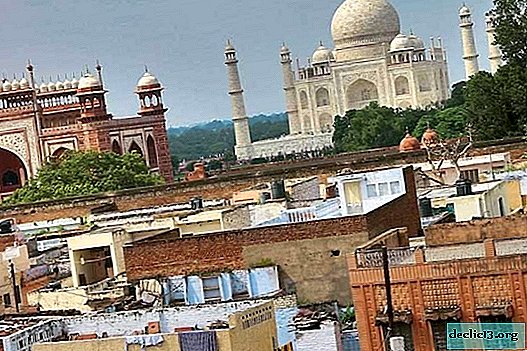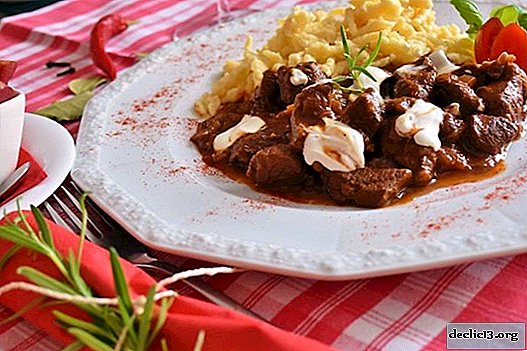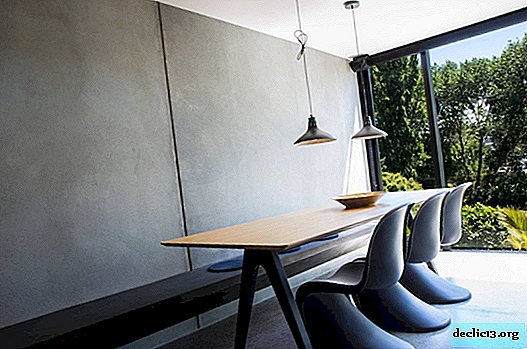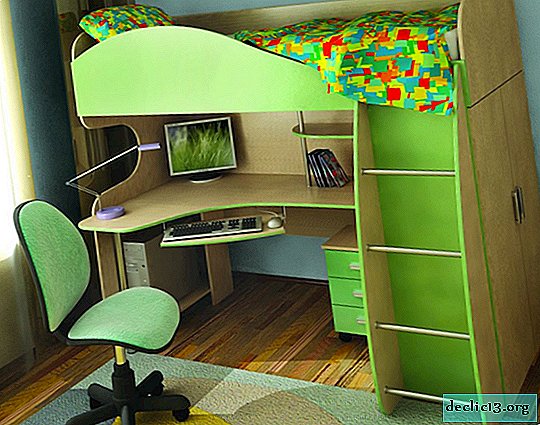Agra City Guide in India
Agra, India is the most popular tourist destination in the country thanks to the famous Taj Mahal. As tourists note, if there was only a palace in the city, it would definitely be worth coming here. Travelers, saturated with European architectural and historical sights, having once seen the Taj Mahal, experience admiration and sincere surprise. Of course, there are many other interesting tourist places. Our review will interest everyone who plans a trip to India, namely the city of Agra.

Photo: Agra, India
General information
The city of Agra is located in the northern part of the country, namely in the Uttar Pradesh region. Today it is the largest tourist center of India, but in the past, the settlement was the main administrative center of the Mughal empire. In addition to the magnificent Taj Mahal, the fort of Akbar the Great, the padishah of the empire, and the tomb in the suburbs, have been preserved.
Interesting fact! Just a few kilometers from the city of Agra there is the abandoned city of Fatehpur Sikri, it was built by Akbar the Great in honor of the birth of the heir.
In the past, the city was inhabited mainly by artisans, modern residents honor the traditions that have developed over the centuries - they create copper products, process ivory, marble.
Agra was built on the bend of the Yamuna River, about 1.7 million people live here. In the lower part of the village, tourists will encounter numerous rickshaws, merchants and annoying guides. By the way, sometimes the persistence and importunity of local merchants is annoying. Fort and Taj Mahal are located a few kilometers from each other on opposite edges of the bend. In the south-western direction, after another 2 km, two stations were built - bus and railway.

Good to know! Tourists focused on budget holidays choose the district of Taj Ganj for their living - the intricate essence of the streets located south of the mausoleum of the padishah.
Historical excursion
Description of the city of Agra begins with the distant 15th century, when the village was founded. In the middle of the 16th century, Babur settled in Agra, who laid the foundation for the construction of fortifications, thanks to the fort the settlement soon became the capital of the Mughal empire. It was from this time that Agra began to develop rapidly. Between the 16-17th centuries, the Taj Mahal and other mausoleums were built in the city. However, in the middle of the 17th century, the administrative center of the empire was moved to Aurangabad, and Agra gradually fell into decay. Throughout the 18th century, the city repeatedly became the cause of the attack of the Pashtuns, Jats and Persians; closer to the 19th century, the Maratha completely destroyed Agra.
At the beginning of the 19th century, the city was captured by the British and began to develop it. Soon, the village became an important shopping center, a railway was launched, and industrial enterprises worked.

Good to know! In the mid-19th century, the British were forced to leave the city under the pressure of local residents.
Since then, the situation in the city has changed dramatically - heavy industry has gradually lost its fundamental importance for Agra, but tourism and the Taj Mahal have become an important source of income.
Climate

The city of Agra in India is characterized by a humid subtropical climate, it is hot, even sultry. The hottest months are April-June, when the daytime temperature sometimes reaches +45 degrees, and at night it becomes slightly cooler - +30 degrees. In winter, from December to February, the air temperature is in the range + 22 ... +27 degrees during the day and + 12 ... +16 in the dark.
It is noteworthy that the monsoons in Agra are not as strong as in other regions of India, the rainy season falls on June-September.
Important! The best time to visit Agra is winter, when the weather is comfortable enough for European tourists, sunny and without rain.
Sights
It is a mistake to believe that the city is remarkable only by the Taj Mahal, there are a large number of historical buildings and other interesting tourist places.
Taj MahalThe main attraction of Agra (India) for more than 350 years, the construction began in the 17th century, lasted more than two decades, and about 20 thousand people worked at the facility.

Interesting fact! The idea of building the palace belongs to the emperor Shah Jahan V, who decided in this way to perpetuate the memory of his dead wife.
Today on the territory of the mausoleum there is a museum where you can see exhibits dedicated to the history of the construction of the sights of Agra.
Helpful information:
- work schedule - daily (except Friday) from 6-00 to 19-00;
- the mausoleum can be visited with an evening tour - from 20-30 to 00-30, duration 30 minutes;
- You can only enter the territory by electric car or rickshaw;
- you can have a limited list of things with you - a passport, 0.5 liters of water, a phone and a camera, tourists leave other things in a storage room;
- the largest line at the South Gate is the main entrance, but it opens later than others, and you can also get into the mausoleum through the East and West Gate.
Details of the Taj Mahal with photos are collected in this article.
Red fort
The attraction is a whole architectural complex, which contains the traditions of various cultures and traditions of the Mughal period. Construction work began in the middle of the 16th century. Each building in the complex is made in a specific architectural or religious style - Islamic, Hindu.
Interesting fact! The height of the defensive structure reaches 21 m, and surrounds the fort, where crocodiles used to live.
What to see on the territory of the attraction:
- Jahangiri Mahal Palace, where the women of the royal dynasty lived;
- Musamman Burj Tower - home to the two most influential Mughal women;
- private auditorium and hall for government receptions;
- Mirror Palace;
- Mariam-uz-Zamani castle, here lived the third wife of Akbar.
Important! The ticket price is 550 rupees. This price also includes visits to all exhibits on the site of the attraction.
More information about Fort Agra is presented on this page.
Tomb of Itmad-ud-Daul
The attraction is built entirely of white marble and decorated in traditional Islamic architecture. The tomb is notable for its skillful inlay. Four minarets rise in the corners of the structure. Visually, the tomb resembles a precious object, since the builders used complex architectural techniques, unusual decoration.
Built attraction for a special person - Giyas Beg. A poor merchant from Iran traveled with his wife to India, on the way they had a daughter. Since the family did not have money, the parents decided to leave the baby. However, the girl screamed and cried so loudly that father and mother returned to pick her up, in the future the daughter brought them luck. Soon, Giyas Beg became a minister and treasurer, and was also awarded the title of pillar of the state, which sounds in the local dialect - Itmad-ud-Daul.
Entrance to the tomb is 120 rupees. Before visiting, you need to take off your shoes, tourists are allowed to wear shoe covers.
Shish Mahal or Mirror PalaceThe attraction is located on the territory of Amber Fort. The palace was built in the 17th century and was originally used as a bathhouse for women living in the courtyard. Then the building was converted into a hotel, and today the attraction is open for free visits. Tourists note the amazing mirror mosaic, which is decorated with ceilings and walls. With the help of glass, floral patterns were laid out, while both transparent and colored glass were used.

Interesting fact! The attraction has no windows, the light only comes through the doors, and the lighting effect is created thanks to thousands of glass pieces.
Entrance to the fort costs 300 rupees, separately for visiting the palace is not necessary, since the entrance ticket gives the right to freely move around the territory. If you wish, you can use the services of a guide, but this is not necessary, since information signs are installed in the palace.
Many tourists say that Shish Mahal is in a sense brighter than even the Taj Mahal. The attraction stands out among other buildings with a special radiance and brilliance.
The attraction is located in the north-east direction from the vineyard, it is impossible to pass by it. Tourists note the filigree work of masters who managed to create not just a palace, but a real work of art.
Interesting fact! In the evenings, the palace holds a theatrical performance with candles.
The only drawback is that it is impossible to go inside the attraction, so tourists can only admire the building from the outside.

Advice:
- there are always a lot of people near the attraction, but you can "catch" the moment when guests are interested in other structures and pay attention to Shish Mahal;
- for a walk, choose comfortable shoes, since a considerable distance will have to go through the fort;
- it is best to visit the attraction in the evening when the palace is lit and shimmers.
Accommodation, where to stay
If you want to save on accommodation, pay attention to the Taj Ganj area, near the Taj Mahal. If you are interested in more comfortable conditions, choose a hotel in the Sadar Bazaar area, from here you can easily reach all the attractions of the city.
Good to know! You will have to pay 30% for rooms in a hotel overlooking the Taj Mahal, and in some cases even 50% more than for ordinary apartments.

- The most budget accommodation in Agra (guesthouses and hostels) costs from $ 6 to $ 12.
- In 2-star hotels, rooms cost $ 11 -15 $.
- For a room in an inexpensive 3-star hotel you have to pay from $ 20 -65.
- Mid-range hotels (4 stars), with their own restaurant and quite comfortable conditions, offer rooms at prices ranging from $ 25 to $ 110.
- A room in a 5 * hotel will cost at least $ 80 per night.
It is not recommended to choose too cheap accommodation, as there is a chance to settle in a hotel with insects in a noisy place.
Where to eat and food prices
Since the Taj Ganj area is tourist-oriented, there are no problems with the choice of restaurants, cafes, street food. A few years ago, cases of poisoning were recorded in Agra, so it is recommended that you choose the places where you can eat especially carefully.
More comfortable and fashionable establishments welcome guests in the Sadar Bazaar area.

A quick bite to eat (light breakfast or light lunch) and a cup of coffee in Agra are available for just $ 2.8. Lunch in a restaurant without alcohol per person will cost from $ 3.5 to $ 10. A full meal at a fast food restaurant costs $ 5.0.
How to get from Delhi
Delhi and Agra are separated by 191 km, if a direct line is drawn, but 221 km will have to be covered on highways.
For travel, you can choose a bus or train.
About fifty buses depart daily from Delhi to Agra. Bus schedule from 5-15 to 24-00, interval from 5 to 30 minutes. Tourists spend from 3.5 to 4 hours on the road.

Good to know! Between the cities there are two types of buses:
- tourist - comfortable, with free wi-fi;
- lokal-bass - are sent as they fill up, but they are less comfortable, as they are usually crowded.
Ticket prices also vary depending on the type of bus. If in the local bass the fare costs from $ 1.7, then a ticket for a tourist flight will cost $ 4. You can buy tickets directly from the driver, but for a tourist flight it is better to purchase tickets in advance, they are sold in the tourist center.
Since traffic jams often occur on Indian roads, it is better to use a train, they run between cities daily from 4-30 to 23-00, an interval of 25 minutes to 1 hour.

Departure from several stations:
- New delhi;
- Nizamuddin;
- Delhi Sarai Rohila;
- Adarsh Nagar;
- Subzi Mandi Delhi.
The train travels from 2.5 to 3 hours. Arriving transport to the central railway station in Agra.
Advice! The most comfortable travel conditions are on Express trains, namely in class 1 cars.
The cheapest tickets (for class 3 cars) cost from 90 rupees, and for travel in a class 1 car you will have to pay 1010 rupees. Tickets can be bought online at the local railways website.
Moving around the city
The most common modes of transport in Agra: auto rickshaw (tuk-tuk), rickshaw and taxi. The fare depends on many factors, even the time of day.
Auto rickshaw (knock knock)
Transport is yellow-green, drives on compressed gas. The cash desk, where you can pay for an auto rickshaw, is located near the railway station and works around the clock.
Estimated fares:
- Sadar Bazaar Sikandra - 90 rupees;
- Taj Mahal - 60 rupees;
- Fatehabad Road - 60 rupees;
- rent a car for 4 hours - 250 rupees.

The fare is from 20 rupees to 150 rupees, depending on the distance and duration of the trip and your ability to bargain.
TaxiNear the station there is a counter where you can pay for taxi services. Works around the clock. Rates range from 70 rupees to 650 rupees (taxi for 8 hours).
Prices on the page are for October 2019.
Tips & Tricks
- Agra is not very suitable for families with children - the city is on the list of the most polluted in India. In addition, the local population reacts to European tourists, trying to touch clothes.
- There is no nightlife in Agra, there are no discos and nightclubs.
- If you want to plunge into the local culture, visit the Kalakriti Cultural & Convention Center and watch the performance.
- Not all bars in Agra are licensed to sell alcoholic beverages, and finding shops specializing in alcohol is also not easy.
- Be sure to visit local shopping centers and markets, here you can safely bargain.
- The biggest danger in Agra is dirty vegetables, fruits, poor-quality water, annoying taxi drivers, children.
- Women are not recommended to dress too frankly - shorts and T-shirts.

Agra (India) is a small, but perhaps one of the most popular tourist cities. People come here to see the unique Taj Mahal and visit other historical, architectural and religious attractions.
Sightseeing of the main sights of Agra:

















